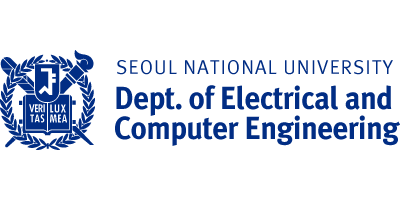Prof. Yongtaek Hong, Develops reliable liquid metal-solid metal contacts for stretchable circuits (20190103)
SNU Professor Yongtaek Hong’s research team develops liquid metal-solid metal contacts that are reliable on stretchable circuits
-“Will accelerate the realization of soft electronic devices that can be attached to the skin”

▲ SNU ECE Professor Yongtaek Hong’s team. From left: Professor Yongtaek Hong, Researcher Eunho Oh
Korean researchers have announced a research accomplishment that will accelerate the commercialization of ‘soft electronic circuits,’ which is a key technology in wearable devices of the future.
SNU College of Engineering (Dean Kook Heon Char) announced on the 3rd that ECE Professor Yongtaek Hong’s research team (Researcher Eunho Oh) developed a stretchable liquid metal-solid metal contacts with longtime reliability by using a corrugated carbon nanotube diffusion barrier.
Through this development, the contact between the semiconductor chip and stretchable electrodes are stable in vertical stress as well as horizontal stress. The problem of vertical stress was considered a difficult issue to resolve in the field of stretchable electronics. With this solution, a green light has lightened up for the development of wearable devices and stretchable electronic circuits.
Liquid metals such as mercury or gallium maintain their liquid form in room temperature and have high electric conductivity, which is why they have been widely used in stretchable electronics. However, when liquid metal makes contact with other metals, it usually penetrates the crystal structure and alters the other metal’s properties. This has been an issue.
To resolve this problem, the research team inserted a ‘corrugated carbon nanotube diffusion barrier’ between the liquid metal and solid metal, successfully blocking the diffusion of liquid metal and only allowing the passage of electrons.
The research team printed a silver circuit on a silicon rubber substrate that was stretched out in advance and formed a 100nm thick layer of carbon nanotubes. Afterward, they returned the stretched board to its original state. As a result, it was possible to stretch the circuit for the silver circuit and the carbon nanotube layer formed the same ridges and these could be flattened as the circuit was stretched.
Even if a liquid metal is placed on top of this manufactured corrugated carbon nanotube, it cannot diffuse into the metal layer formed underneath. Along with this, the research team also demonstrated a method to use corrugated diffusion barriers and liquid metals to join surface mount devices to stretchable circuits.
Conventional methods had technical limitations because if stress was applied vertically at the contact region between the soft, elastic circuit and the solid surface mount device, the contacting part was destroyed. As a solution, the research team developed a floating contact technology where the contact of the surface mount device is floating on liquid metal. They successfully joined the hard device and soft substrate with electricity without applying stress.
Professor Yongtaek Hong explained, “Circuits manufactured in such a manner can operate stably even when stretched. Even when the surface mount devices are repeatedly pressed, there is no damage to its operation. This can be applied to the manufacture of displays attached to the body or mobile devices which will be pressed by users for interactions between user and device.”
The research results were published on December 19th in the world-renowned international journal ‘Advanced Functional Materials’ and was chosen as the inside cover image for issue 28. The research was supported by the Institute for Information and Communications Technology Promotion.

▲ (From left) A stable contact between liquid metal and solid metal with the help of a corrugated carbon nanotube diffusion barrier / A floating contact technology using wrinkled corrugated carbon nanotube diffusion barrier and display circuits made with this technology

▲ Inside cover image
Source: https://ee.snu.ac.kr/community/news?bm=v&bbsidx=48331
Translated by: Jee Hyun Lee, English Editor of Department of Electrical and Computer Engineering, jlee621@snu.ac.kr


